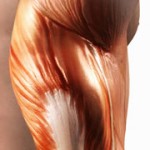Archive for Март, 2008
Robotic gait trainer in water: Development of an underwater gait-training orthosis
- Тип контента: Научная статья
- Номер документа: 6004
- Название документа: Robotic gait trainer in water: Development of an underwater gait-training orthosis
- Номер (DOI, IBSN, Патент): 0963-8288
- Изобретатель/автор: Tasuku Miyoshi, Kazuaki Hiramatsu, Shin-Ichiro Yamamoto, Kimitaka Nakazawa, Masami Akai
- Правопреемник/учебное заведение: Shibaura Institute of Technology, Saitama, Japan Foundation for Aging and Health, Aichi, Hitachi Medical Corporation, Chiba, Research Institute of National Rehabilitation Center for Persons with Disabilities, Saitama, Japan
- Дата публикации документа: 2008-03-31
- Страна опубликовавшая документ: Япония
- Язык документа: Английский
- Наименование изделия: Не заполнено
- Источник: Не заполнено
- Вложения: Да
- Аналитик: Глаголева Елена
 Purpose. To develop a robotic gait trainer that can be used in water (RGTW) and achieve repetitive physiological gait patterns to improve the movement dysfunctions. Method. The RGTW is a hip-knee-ankle-foot orthosis with pneumatic actuators; the control software was developed on the basis of the angular motions of the hip and knee joint of a healthy subject as he walked in water. Three-dimensional motions and electromyographic (EMG) activities were recorded in nine healthy subjects to evaluate the efficacy of using the RGTW while walking on a treadmill in water. Results. The device could preserve the angular displacement patterns of the hip and knee and foot trajectories under all experimental conditions. The tibialis anterior EMG activities in the late swing phase and the biceps femoris throughout the stance phase were reduced whose joint torques were assisted by the RGTW while walking on a treadmill in water. Conclusion. Using the RGTW could expect not only the effect of the hydrotherapy but also the standard treadmill gait training, in particular, and may be particularly effective for treating individuals with hip joint movement dysfunction.
Purpose. To develop a robotic gait trainer that can be used in water (RGTW) and achieve repetitive physiological gait patterns to improve the movement dysfunctions. Method. The RGTW is a hip-knee-ankle-foot orthosis with pneumatic actuators; the control software was developed on the basis of the angular motions of the hip and knee joint of a healthy subject as he walked in water. Three-dimensional motions and electromyographic (EMG) activities were recorded in nine healthy subjects to evaluate the efficacy of using the RGTW while walking on a treadmill in water. Results. The device could preserve the angular displacement patterns of the hip and knee and foot trajectories under all experimental conditions. The tibialis anterior EMG activities in the late swing phase and the biceps femoris throughout the stance phase were reduced whose joint torques were assisted by the RGTW while walking on a treadmill in water. Conclusion. Using the RGTW could expect not only the effect of the hydrotherapy but also the standard treadmill gait training, in particular, and may be particularly effective for treating individuals with hip joint movement dysfunction.
Категория: Научные статьи | Нет комментариев »
Новая искусственная мышца локализует очаги повреждений
- Тип контента: Новостная статья
- Номер документа: 2237
- Название документа: Новая искусственная мышца локализует очаги повреждений
- Номер (DOI, IBSN, Патент): Не заполнено
- Изобретатель/автор: Не заполнено
- Правопреемник/учебное заведение: Не заполнено
- Дата публикации документа: 2008-03-25
- Страна опубликовавшая документ: Россия
- Язык документа: Русский
- Наименование изделия: Не заполнено
- Источник: http://www.membrana.ru/particle/12418
- Вложения: Не заполнено
- Аналитик: Ридна Украина)))
 Цибин Пэй (Qibing Pei) и его коллеги из Калифорнийского университета в Лос-Анджелесе (UCLA) и ряда других научных центров и компаний США построили синтетические мускулы, способные практически без потери силы переносить небольшие повреждения.
Цибин Пэй (Qibing Pei) и его коллеги из Калифорнийского университета в Лос-Анджелесе (UCLA) и ряда других научных центров и компаний США построили синтетические мускулы, способные практически без потери силы переносить небольшие повреждения.
Категория: Двигатели | 1 Комментарий »
A Passive Support To Motion Capability Of Subjects Affected By Neuromuscular Diseases
- Тип контента: Научная статья
- Номер документа: 7829
- Название документа: A Passive Support To Motion Capability Of Subjects Affected By Neuromuscular Diseases
- Номер (DOI, IBSN, Патент): Не заполнено
- Изобретатель/автор: Federico Casolo, Simone Cinquemani, Matteo Cocetta
- Правопреемник/учебное заведение: Department of Mechanics , Politecnico di Milano
- Дата публикации документа: 2008-03-21
- Страна опубликовавшая документ: Италия
- Язык документа: Английский
- Наименование изделия: Не заполнено
- Источник: Proceedings of the World Congress on Engineering 2008
- Вложения: Да
- Аналитик: Глаголева Елена
 Degenerative neuromuscular diseases as muscular dystrophy may severely reduce the autonomous mobility of the subject’s limbs. Most subjects can recover some autonomy by means of external devices mounted on their wheelchairs. The helping devices can be active — generally motor driven- or passive. Sometime the active devices require a driving action of the contralateral upper limb. Following a specific request of some people, as first step of the research a simple and passive helping device has been designed, built and tested on subjects affected by muscular dystrophy (MD). The preliminary tests demonstrate that the prototype can increase the subjects’ upper limbs range of motion and that it is well accepted by the dystrophic patients.
Degenerative neuromuscular diseases as muscular dystrophy may severely reduce the autonomous mobility of the subject’s limbs. Most subjects can recover some autonomy by means of external devices mounted on their wheelchairs. The helping devices can be active — generally motor driven- or passive. Sometime the active devices require a driving action of the contralateral upper limb. Following a specific request of some people, as first step of the research a simple and passive helping device has been designed, built and tested on subjects affected by muscular dystrophy (MD). The preliminary tests demonstrate that the prototype can increase the subjects’ upper limbs range of motion and that it is well accepted by the dystrophic patients.
Категория: Научные статьи | Нет комментариев »
A shape memory alloy-based tendon-driven actuation system for biomimetic artificial fingers, part I: design and evaluation
- Тип контента: Научная статья
- Номер документа: 6752
- Название документа: A shape memory alloy-based tendon-driven actuation system for biomimetic artificial fingers, part I: design and evaluation
- Номер (DOI, IBSN, Патент): 10.1017/S026357470800458X
- Изобретатель/автор: Vishalini Bundhoo, Edward J. Park, Edmund Haslam, Benjamin Birch
- Правопреемник/учебное заведение: Department of Mechanical Engineering, University of Victoria, PO Box 3055 STN CSC, Victoria, British Columbia, Canada, V8W 3P6
- Дата публикации документа: 2008-03-18
- Страна опубликовавшая документ: Канада
- Язык документа: Английский
- Наименование изделия: Не заполнено
- Источник: Robotica: page 1 of 16. © 2008 Cambridge University Press
- Вложения: Да
- Аналитик: Глаголева Елена
 In this paper, a new biomimetic tendon-driven actuation system for prosthetic and wearable robotic hand applications is presented. It is based on the combination of compliant tendon cables and one-way shape memory alloy (SMA) wires that form a set of agonist–antagonist artificial muscle pairs for the required flexion/extension or abduction/adduction of the finger joints. The performance of the proposed actuation system is demonstrated using a 4 degree-of-freedom (three active and one passive) artificial finger testbed, also developed based on a biomimetic design approach. A microcontroller-based pulse-width-modulated proportionalderivation (PWM-PD) feedback controller and a minimum jerk trajectory feedforward controller are implemented and tested in an ad hoc fashion to evaluate the performance of the finger system in emulating natural joint motions. Part II describes the dynamic modeling of the above nonlinear system, and the model-based controller design.
In this paper, a new biomimetic tendon-driven actuation system for prosthetic and wearable robotic hand applications is presented. It is based on the combination of compliant tendon cables and one-way shape memory alloy (SMA) wires that form a set of agonist–antagonist artificial muscle pairs for the required flexion/extension or abduction/adduction of the finger joints. The performance of the proposed actuation system is demonstrated using a 4 degree-of-freedom (three active and one passive) artificial finger testbed, also developed based on a biomimetic design approach. A microcontroller-based pulse-width-modulated proportionalderivation (PWM-PD) feedback controller and a minimum jerk trajectory feedforward controller are implemented and tested in an ad hoc fashion to evaluate the performance of the finger system in emulating natural joint motions. Part II describes the dynamic modeling of the above nonlinear system, and the model-based controller design.
Категория: Научные статьи | Нет комментариев »
A review of exoskeleton-type systems and their key technologies
- Тип контента: Научная статья
- Номер документа: 6260
- Название документа: A review of exoskeleton-type systems and their key technologies
- Номер (DOI, IBSN, Патент): 10.1243/09544062JMES936
- Изобретатель/автор: Y-M Dong, Y Zhang, Y Chen, J-F Zhang, C-JYang
- Правопреемник/учебное заведение: Zhejiang University, Hangzhou
- Дата публикации документа: 2008-03-18
- Страна опубликовавшая документ: Китай
- Язык документа: Английский
- Наименование изделия: Не заполнено
- Источник: Journal of Mechanical Engineering Science
- Вложения: Да
- Аналитик: Глаголева Елена
 The exoskeleton-type system is a brand new type of man–machine intelligent system. It fully combines human intelligence and machine power so that machine in-telligence and human operator’s power are both enhanced. Therefore, it achieves a high-level performance that neither could separately. This paper describes the basic exoskeleton concepts from biological system to man–machine intelligent systems. It is followed by an overview of the development history of exoske-leton-type systems and their two main applications in teleoperation and human power augmentation. Besides the key technologies in exoskeleton-type systems, the research is presented from several viewpoints of the biomechanical design, system structure modelling, cooperation and function allocation, control strategy, and safety evaluation.
The exoskeleton-type system is a brand new type of man–machine intelligent system. It fully combines human intelligence and machine power so that machine in-telligence and human operator’s power are both enhanced. Therefore, it achieves a high-level performance that neither could separately. This paper describes the basic exoskeleton concepts from biological system to man–machine intelligent systems. It is followed by an overview of the development history of exoske-leton-type systems and their two main applications in teleoperation and human power augmentation. Besides the key technologies in exoskeleton-type systems, the research is presented from several viewpoints of the biomechanical design, system structure modelling, cooperation and function allocation, control strategy, and safety evaluation.
Категория: Научные статьи | Нет комментариев »
Статистика
Категорий: 179
Статей всего: 2,003
По типу:
Видео: 36
Выдержка с форума: 1
Контактные данные: 12
Научная статья: 1388
Не заполнено: 5
Новостная статья: 317
Обзор технологии: 42
Патент: 219
Тех.подробности: 34
Тип: 1
Комментариев: 6,236
Изображений: 3,005
Подробней...
ТОР 10 аналитиков
-
Глаголева Елена - 591
Дмитрий Соловьев - 459
Helix - 218
Ридна Украина))) - 85
Наталья Черкасова - 81
max-orduan - 29
Елена Токай - 15
Роман Михайлов - 9
Мансур Жигануров - 4
Дуванова Татьяна - 3
Календарь
Авторизация
Ошибка в тексте?
Выдели её мышкой!
И нажми Ctrl+Enter